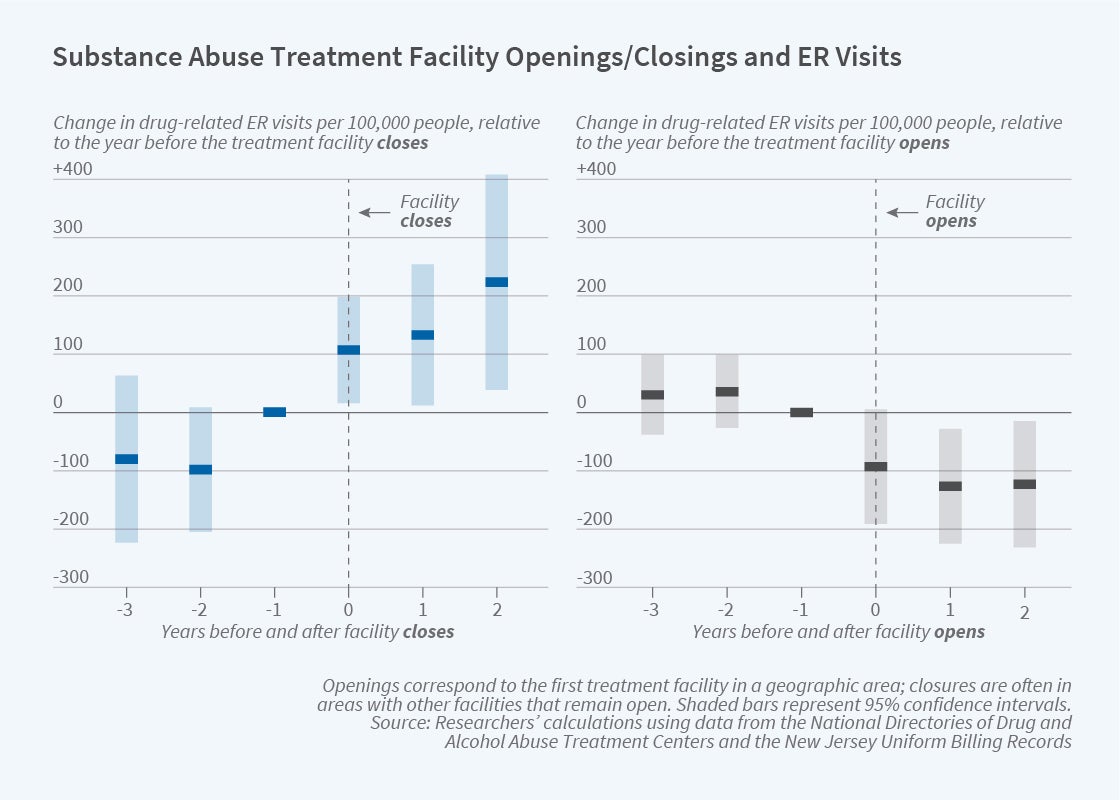The Value of Treatment Facilities in Fighting Opioid Abuse

Specialized drug abuse treatment facilities serve as less-costly alternatives to emergency rooms in providing care to opioid abusers.
In the past 20 years, fatalities due to drug overdoses have tripled in the United States, dwarfing the tolls of previous drug epidemics and reducing American life expectancy. Most of those deaths have come from opioid abuse.
While this problem has elicited calls for expanded treatment, it is not clear what the best treatment option is. Data about the effectiveness of particular treatments are hard to come by because of privacy concerns and the stigma surrounding substance abuse. Moreover, there are no comprehensive data on the location and dates of operation of treatment facilities.
To examine these issues, Adriana Corredor-Waldron and Janet Currie construct their own database of more than 800 treatment facilities in New Jersey and study the relationship between the opening and closing of such facilities and emergency room visits involving substance abuse. In Tackling the Substance Abuse Crisis: The Role of Access to Treatment Facilities (NBER Working Paper 28862), they find that when a new clinic opens in an area that has no substance abuse treatment facility, local visits to the emergency room for substance abuse fall 9.5 percent. Conversely, when a treatment facility closes, drug-related visits to the ER rise 16.6 percent.
The relative effectiveness of particular treatments is harder to discern. There are three types of drug treatment: inpatient hospital care, outpatient clinics, and residential treatment centers. In New Jersey, there are so few inpatient hospitals with substance abuse treatment that it is hard to measure their effectiveness with any confidence. The share of substance abuse facilities that is residential fell from 17 percent in 2008 to 14.6 percent in 2015, mostly because of the growth in outpatient facilities. The researchers find that even when they focus only on the opening and closing of outpatient facilities, the correlation with ER visits is similar to that for the sample of all treatment facilities.
Proximity plays a key role. For every extra mile patients have to travel to reach a facility, the number of substance abuse cases handled by the local ER rises by 46.9 yearly visits per 100,000 individuals, a 1.85 percent increase. Distance to substance abuse clinics has little effect on mental health and all other types of ER visits.
Results also vary depending on demographics. Black people and individuals aged 15 to 24 are more likely than other groups to drop out of treatment at substance abuse facilities that are relatively far away. This effect is smallest for middle-aged individuals.
On average, when a facility closes, there are an extra 285 drug-related ER visits per 100,000 individuals. Using the average cost of an ER visit for opioid abuse of $528 in 2020 dollars, the researchers calculate that the total additional ER cost associated with a facility closure, again per 100,000 persons, is $150,480. They observe that in performing cost-benefit analysis on the value of a treatment facility, “… to the extent that successful treatment prevents loss of life due to drug overdose, reduces other outpatient and inpatient costs associated with substance abuse, and reduces social costs due to crime and lost wages as well, this figure is clearly an extreme lower bound.”
— Laurent Belsie


